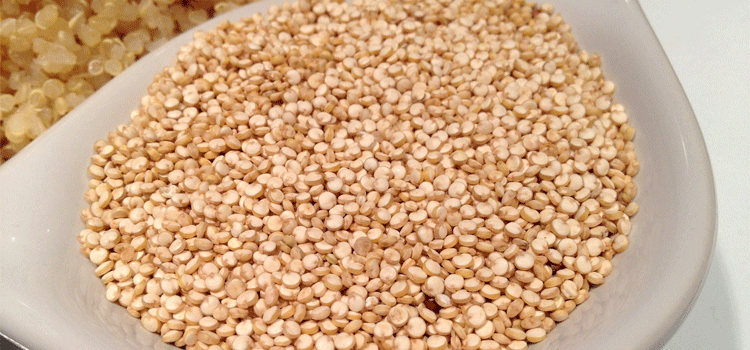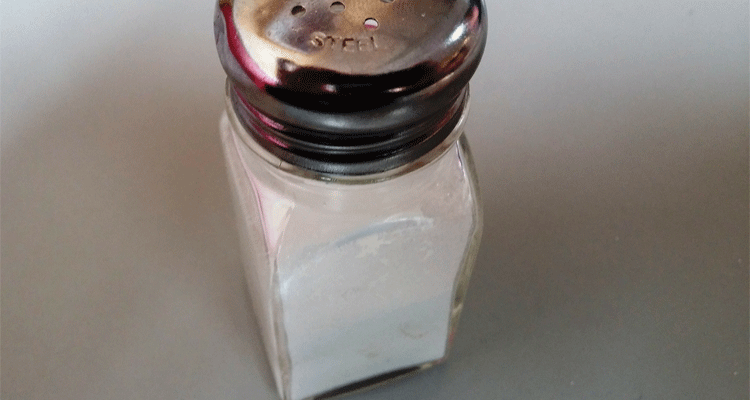Before the Agricultural Revolution 10,000 years ago our ancestors didn’t have access to foods created in the Industrial Revolution 200 years ago. Eating a modified Paleolithic diet may very well be the key to reducing many of the chronic illnesses and diseases of the 20th century: obesity, heart disease, stroke and diabetes. AHA estimates in 2006 81,100,000 Americans suffered from one or more types of preventable cardiovascular diseases.
What is the Paleolithic diet?
Paleolithic men were hunters and gatherers. They roamed in small packs, ate wild, uncultivated vegetation of fruits, berries, nuts and vegetables and the carcass remains of animals, which had been killed by carnivores. Moreover, they would eat visceral meat, brain and marrow from the bones. It is believed that they preferred to live by rivers, oceans and wetlands. The hunters and gatherers learned to create tools, which they used to fish and open bivalves. Afterward, those tools became weapons to help them hunt and kill in order to fetch food for themselves. As a result, they became self-sufficient.
The major source of dense nutritional food for Paleolithic man was meat obtained from animals. As anthropologist Leslie Aiello opines, the intake of meat with a high density of protein led to the development of the human brain. It is believed that they consumed milk during suckling period. However, research implies they didn’t consume any milk products until the domestication of sheep.
The amount and consumption, if any, of whole grains and tubers is debatable. According to Dr. Cordain, author of The Paleo Diet, Paleolithic man ate little or no grain, which Dr. Cordain, establishes to be the reason for many of present day’s chronic illness. Agreeing concurrently with him is Dr. Barry Sears, author of The Zone Diet. He reveals that the switch to a grain-based diet in Egypt in 7000 BC was a chief factor in the emergence of disease in the modern civilization. Likewise, Dr. Mercola, who operates a holistic website, advises his patients to avoid grains altogether. However, scholar Richard Wrangham in his book, Catching Fire: How Cooking Made Us Human, argues that as fire was discovered 1.5 million years ago, our ancestors would have eaten grain, legumes and tubers. Similarly, Weston A. Price established that inhabitants of Africa ate millet and corn, while South Americans ate quinoa and amaranth. In addition, he explains that American Indians more fondly ate wild rice, corn and beans, while Australian Aborigines collected a special variety of wild millet and ate different types of legumes. Various anthropologists presented their research about the nutritional information after studying the fossils. Their research suggests that many Paleolithic tribes in South America mostly consumed maze and grains. Further, the research implies that the Paleolithic diet differed depending on the latitude where they lived.
Additionally, studies have estimated that the average lifespan was only 30 years, owing to accidents, infection and lack of antibiotics. It is assumed that obesity was unheard of, as were degenerative diseases. Research shows that they generally had plenty to eat, were comparatively healthier and had less stressful lives than we do in the 21st century. Information available on their diet is varied, inconsistent and contentious. What we know for certain and what is more important is not what our Paleolithic ancestors ate but what they did not eat. They didn’t consume refined flour, sugar, salt or hydrogenated oils.
Refined and Complex Carbohydrates

This leads to an important discussion about refined and complex carbohydrates. Carbohydrates are easily digested into sugar. The rate of conversion depends on whether the carbohydrate is simple (refined sugar) or complex (containing fiber). Complex carbohydrates with fiber provide a slower release of sugar into the bloodstream. Refined carbohydrates lead to a rapid increase in the blood sugar levels, which is a state called sugar high. In turn the body releases insulin to neutralize the rapid release of blood sugar, which is a state called sugar crash. The crash causes difficulty while concentrating, increase in hunger, memory loss and mood swings. Excess of refined carbohydrates is responsible for syndrome x— a condition caused by the constant rise and decline of insulin. Thus chronically high insulin levels lead to an increase in weight, elevate blood pressure, cholesterol and triglycerides, suppress the immune system, and increase plaque on arterial walls. Carbohydrates are not the enemies of our body, but refined carbohydrates and simple sugars are.
Whole grains are essential for good health, as fiber offers numerous benefits. Would Fred Flintstone have eaten lots of whole grains? Maybe, maybe not, but we do know he was not following a diet full of refined sugar, salt and hydrogenated oil either. Studies conducted at Harvard prove that people who eat whole grains have a 26 percent reduction in heart diseases. The study goes on to show that women have a 31 percent reduction in stroke. Both men and women were demonstrated to have a 38 percent reduction in the risk of diabetes, whereas a diet rich in refined grains was associated with 31 percent increase in diabetes. A study conducted in 2003 in Europe found that consuming a diet rich in whole grains resulted in a 25 percent reduction of colon cancer and a 27 percent decreased risk of developing polyps that could develop into cancer.
Effects of the Modern Diet
Salt is another cause for the development of heart disease. The majority of salt in the American diet comes from fast and processed foods. The American Heart Association recommends that in order to stay healthy, adults should not exceed 2,300 milligrams of sodium a day. This is equal to about 1 teaspoon of table salt, an amount that is easily consumed by eating processed and pre-packaged foods. Reducing the amount of salt can reduce the risk of heart disease and stroke by 25 percent. Texas cardiologist J. James Rohack, MD, who was on the AMA board, says 150,000 lives could be saved in the U.S. annually if everyone cut their sodium consumption in half. “The average American is eating three times as much salt as is healthy every day, the equivalent of 2 to 3 teaspoons instead of no more than 1.” The assumption tends to be, “If I don’t use my salt shaker much, I’m probably OK,” but that just isn’t true.

Trans fat, hydrogenated or partially hydrogenated oil have been found to cause heart disease. Trans fats are formed when liquid vegetable oils are converted into solids through a process called hydrogenation. Hydrogenated or partially-hydrogenated oils are used to increase the shelf life of foods and improve their texture. Eighty percent of trans fats in the American diet today come from factory produced vegetable oil. It has been proven that trans fats increase the risk of heart disease by increasing total cholesterol and dropping healthy HDL cholesterol.
Our diet today is far from that of our caveman ancestors. Although our diet has vastly changed the human genome, our genetic composition, some authors argue, has barely changed at all. Some genetics indicate that it takes at least 2,000 generations for a minimal change in our genome. Humans had followed a paleo diet for a few million years, an agricultural diet for only about 10,000 years and a post-Industrial diet for about 200 years. We have thrived on a paleo diet for over 99 percent of our history. As a result, we have made our nutritional requirements more identical to our Stone Age ancestors who where living before the Agricultural Revolution. Other scientists believe our genome adapts much quicker to change. No matter if or when our genome adapted, we know for certain that the real cause of many of today’s never ending health issues is not the low-fat, high-carbohydrate diet, but rather the poor fat, refined-carbohydrate diet that many Americans follow.
Benefits of the Paleolithic Diet

One of the major benefits of a paleo type diet is the elimination of refined carbs such as white bread, white rice, white pasta, sodas, juices, processed grains, some fruits and sweets that have a high glycemic index (GI). Foods that have a high GI increase blood sugar quickly and are lower in nutrient density. The rise in blood sugar from high GI foods causes higher insulin levels. A research conducted by Harvard University and Northwestern University confirmed the low-carbohydrate, high-protein diet to be an effective choice for weight loss primarily because high-protein diet gives the person satiety and lowers their insulin levels.
Although a Paleolithic diet has a higher percentage of meat-based protein than recommended today by the FDA, heart disease was not a concern for a caveman. This could perhaps be because the meat they ate came from wild animals and fish, and besides, it had healthy fats that were a good source of omega-3. In addition, research published in the European Journal of Clinical Nutrition claims that grass-fed beef today has the same omega-6 to omega-3 ratio as wild meat, while our diet today consists of food with saturated fats and an imbalance in the types of polyunsaturated fats. Further, the research illustrates that prior to agriculture, the omega-6 to omega-3 ratio would have ranged from 1:1 to 3:1. Today’s western diets consist of a ratio of omega-6/omega-3 to be about 12:1. This high ratio is associated with cardiovascular diseases, certain types of cancers and inflammatory disease responses.
According to the University of Maryland, an inappropriate balance of these essential fatty acids (high omega-6/omega-3 ratio) contributes to the development of diseases while a proper balance helps maintain and even improve health. A healthy diet should consist of roughly one to four times more omega-6 fatty acids than omega-3 fatty acids. However, the typical American diet tends to contain 11 to 30 times more omega-6 fatty acids than omega-3. Many researchers believe this imbalance is a significant factor for the rising rate of inflammatory disorders in the United States. AP Simopoulus states, “A lower ratio of omega-6/omega-3 fatty acids is more desirable in reducing the risk of many of the chronic diseases of high prevalence in Western societies, as well as in the developing countries, that are being exported to the rest of the world.”
The following is a graph that compares fatty acids among grass-fed and grain-fed beef. This graph is a part of a research conducted by the College of Agriculture, California State University, Chico.
| Grass-fed | Grain-fed | |
| EFAs by diet (as % of total fatty acids) |
||
| n-6 fatty acids | 5.66 %a | 3.92 %a |
| n-3 fatty acids | 2.90 %b | 0.64 %c |
| n6:n3 ratio | 1.95d | 6.38e |
From the analysis of various research, it can be concluded that the Paleolithic diet is much higher in protein and lower in carbohydrates than the USDA recommended My Pyramid diet. Even though more than half of the calories in the Paleolithic diet come from meat and seafood, the saturated fat content is quite low, even lower than recommended values (10 percent) known to reduce the risk of high blood cholesterol and heart disease. The fats you should consume are good fats, monounsaturated and polyunsaturated fats. These good fats lower blood cholesterol levels and are considerably higher in a Paleolithic diet than what one would get by following the My Pyramid diet.

Eating organic or grass fed beef would be ideal but unfortunately very costly. However, there is no downside to eating more fresh fruits, vegetables, avoiding processed foods and reducing or eliminating sugars and salt. It is not an uphill task to get going with Paleolithic diet, considering the innumerable health benefits it provides. Though it may sound difficult, we can all take steps to remove the refined carbohydrates and artificial foods from our diet. The research proves that it would enhance our health, reducing the risk of various types of diseases.
Visit FitnessrxforMen for the original article and more on fit food and exercise tips.













